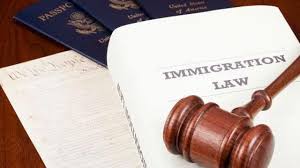Visa Bonds Immigration
Visa Bonds Immigration: Everything You Need to Know in 2025
Visa bonds immigration is an evolving topic in global migration policies, especially in countries enforcing stricter immigration control. Understanding how visa bonds work, why they are required, and how they affect travelers and immigrants is crucial for those planning international travel or immigration.
In this guide, we’ll break down everything you need to know about visa bonds, who needs them, how to secure one, and what it means for your immigration journey.
What Is a Visa Bond?
A visa bond is a financial guarantee that a traveler or immigrant will comply with the conditions of their visa. Governments may require a visa bond to ensure that:
-
The individual will leave the country when their visa expires.
-
They will not overstay or violate visa terms.
-
They will comply with immigration and employment laws.
If the visa holder breaches any of these conditions, the bond is forfeited. If all conditions are met, the bond is refunded.
Why Are Visa Bonds Needed by Certain Countries?
The main purposes of visa bonds are to:
Cut down on overstays of visas
Reduce unauthorized immigration
Hold applicants or sponsors responsible.
Cover the cost of deportation financially.
For high-risk applicants or those from nations with high overstay rates, nations such as the United States, the United Kingdom, and those in the Middle East have proposed or put into effect visa bond programs.
Who Must Pay a Bond for a Visa?
Countries and visa categories have different rules for visa bonds. You may be required to pay a visa bond if you are:
From a nation at high risk
Applying for a temporary visa (e.g., tourist, student, or work visa)
Sponsored by a private individual or family member
Entering a country with strict immigration control measures
Always check the official immigration website of your destination country for the latest visa bond policies.
How Much Is a Visa Bond?
The cost of a visa bond can vary significantly depending on:
-
The destination country
-
Visa type
-
Risk assessment of the applicant
For instance, the U.S. once piloted a visa bond program requiring $5,000 to $15,000 from applicants of certain temporary visas.
How to Secure a Visa Bond
Securing a visa bond involves:
-
Visa application approval (initial screening)
-
Bond notification from the immigration authority
-
Payment of the bond via certified financial institutions
-
Issuance of visa after bond confirmation
Ensure you keep all receipts and official documents to claim your refund after compliance.
Is the Visa Bond Refundable?
Yes. Most visa bonds are refundable once the visa holder:
-
Leaves the country before visa expiry
-
Follows all visa regulations
-
Does not engage in illegal activities
The refund process may take several weeks or months, depending on the country’s policy.
Visa Bonds Immigration: Pros and Cons
Pros:
-
Encourages lawful immigration behavior
-
Acts as a financial safety net for governments
-
Helps deter visa abuse and overstays
Cons:
-
Can be financially burdensome
-
May deter legitimate travelers
-
Often criticized as discriminatory
